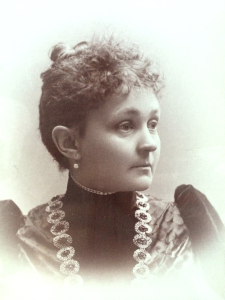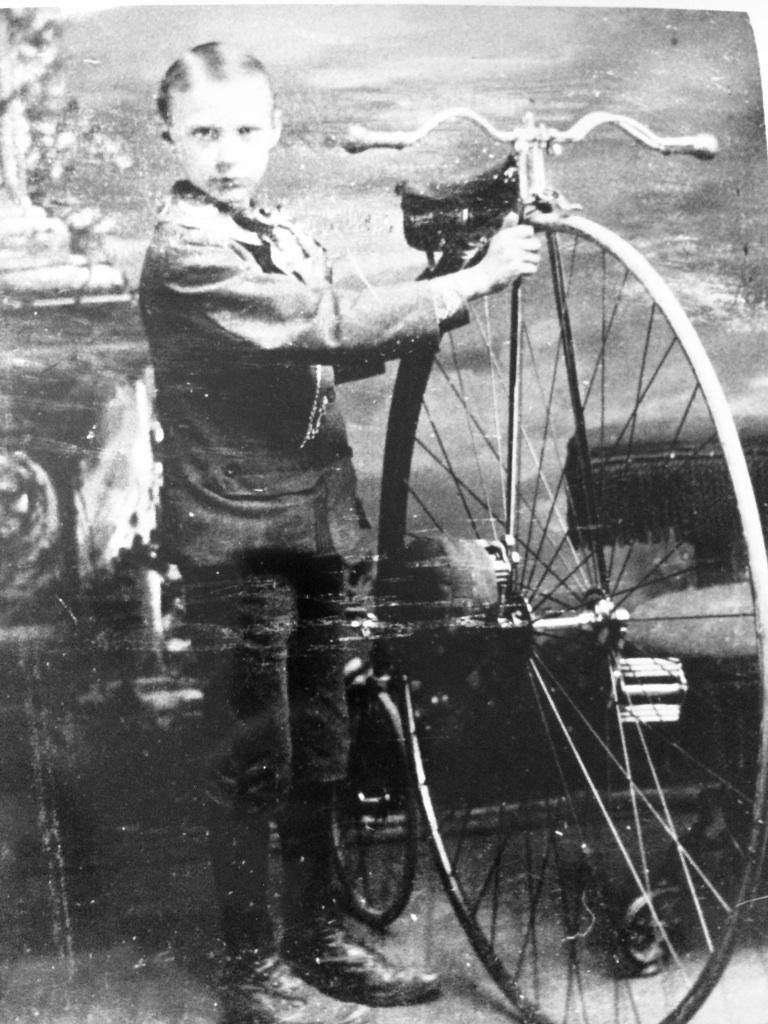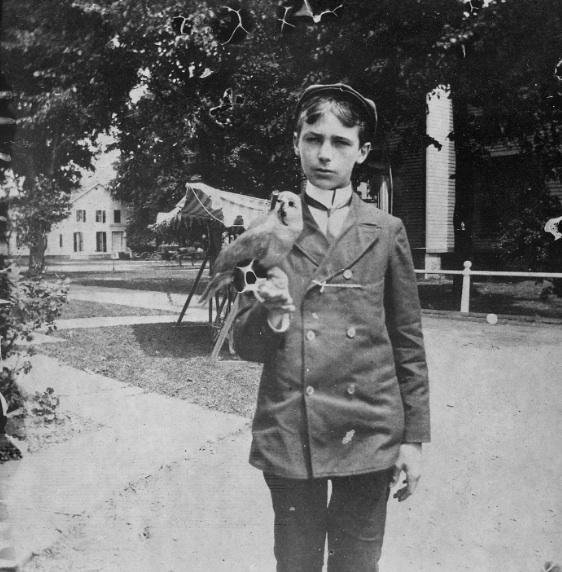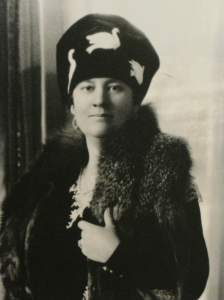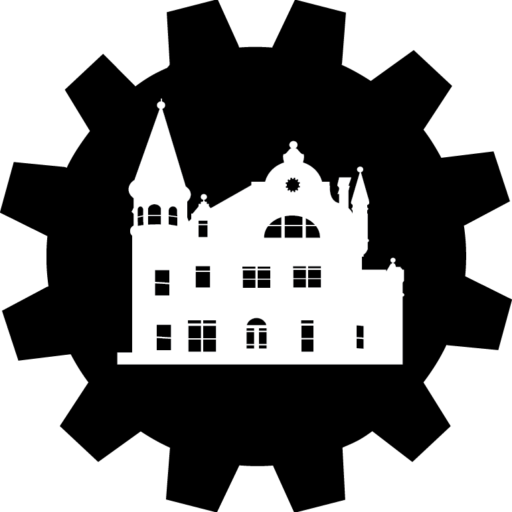The Wickwire Family
ARDELL WICKWIRE (1845-1915)
The Boss
Ardell Rouse married Chester Wickwire on October 2, 1866. They moved into her mother’s house at 17 Tompkins Street, where she gave birth to their first son, Raymond, who died of scarlet fever at age 5. She also gave birth to sons Charles and Frederic while living in her mother’s house.
The Wickwires moved into their new mansion in 1890. As the lady of the house, Ardell Wickwire supervised the servants and ran the day-to-day operations of the house, while her husband was off supervising the factory. At the start of each day, Ardell met with servants in the Morning Room to go over their daily assignments.
Ardell also hosted an “at home” day once a week, where she entertained a group of ladies over tea in the Morning Room. During these meetings, they may have discussed the numerous local causes they were involved in. Ardell served on the Finance and Entertainment Committees of the Cortland Library Association, and the Social Committee and Women’s Auxiliary of the YMCA. She also promoted the construction of the Cortland Memorial Hospital (now known as Guthrie Cortland Medical Center). Initially the family had donated $70,000 to the cause, but by 1911, the Wickwires had donated $95,000 toward the hospital’s construction and expansion.
CHARLES WICKWIRE (1879-1956)
The Romantic
Charles, the oldest son of Chester and Ardell, was eleven years old when the family moved into the house in 1890.
As a boy, Charles played with Mabel Fitzgerald, who was then “the girl next door”. They eventually married in 1902 (see the entry on Mabel Fitzgerald for more information). Chester took Charles and Frederic on many cultural trips to places like New York City, Saratoga Springs, the West Coast, as well as the World’s Columbian Exposition in Chicago in 1893.
Charles played several musical instruments, including banjo, autoharp, and xylophone. He was a member of the local Banjo Club, and earned a club certificate for his efforts. Charles took banjo lessons from a local teacher, Professor Leonard, and French lessons from Professor Henrique. He and Frederic attended a weekly French club, where students were required to speak only in French.
Charles attended the Cortland Normal School, and as a high school student, he then attended Phillips Andover Academy in Massachusetts. He later attended Yale University, where he earned a Bachelor’s Degree.
Upon his marriage to Mabel, Charles built the red mansion that sits to the left of the 1890 House (when viewed from outside, looking toward the house). This mansion is now used as the SUNY Cortland Alumni House.
After college, Charles became Vice President of the Wickwire Brothers factory. Upon his father’s death, he became the factory’s President, and managed the company during its peak production period of the 1920s-1940s.
FREDERIC WICKWIRE (1883-1929)
The Renovator
Frederic Wickwire was seven years old when his family moved into the Wickwire mansion. As a boy, Frederic took banjo and French lessons and attended Cortland Normal School.
Young Frederic often accompanied his mother on trips to Ithaca and New York. At some point, Frederic signed his name, “Fred”, on the inside of a trapdoor in the library’s pantry.
Frederic owned a menagerie of pets, including a Pionus parrot named Jac. Jac had free reign over the house – he could fly anywhere. Frederic also owned a basset hound and a pony.
As a high school student, Frederic attended Phillips Andover Academy in Massachusetts, just as his brother, Charles, did. Frederic also went on to attend Yale, where he earned a Bachelor of Philosophy in 1905. After college, Frederic joined the Wickwire Brothers factory, as General Superintendent and later as Secretary of the Board of Trustees.
In 1923, at age 40, Frederic moved into the vacant Wickwire mansion with his new family: His wife, Marian, and his four children, Chester, Cynthia, Lyman, and Winthrop. Frederic and Marian made extensive renovations to the house, including the addition of the Fernery, the addition of Lincrusta wallpaper on the second and third floors, and the removal of the mantles over the house’s fireplaces. Frederic died of a long term, undisclosed illness in 1929.
MARIAN GOODRICH WICKWIRE (1888-1973)
The Resident
Marian Goodrich married Frederic Wickwire on June 1, 1912. Together they had four children: Chester Frederic (born 1913), Cynthia Margaret (born 1915), Lyman Goodrich (born 1919), and Winthrop Rouse (born 1923).
Marian and her family moved into Chester’s mansion in 1923. She and Frederic quickly made updates to the house to better accommodate the tastes and styles of the 1920s. When they added the Fernery, Marian ordered the colorful, cherub-adorned chandelier. Her love of cherubs is seen throughout the house, and especially on the second floor, where several are carved into the Lincrusta wallpaper.
After Frederic’s death in 1929, Marian spent two years in the house as a widow. In 1931, she married local judge C. Leonard O’Connor, who then moved into the Wickwire mansion. Marian and Leonard made further updates to the house, modernizing the kitchen and bathrooms. Marion outlived her second husband as well, who passed away in 1971.
Marian enjoyed planning garden parties, as well as writing poetry. Some of her poetry is on display on her desk in the Morning Room.
In her elder years, Marian became infirm, and could no longer walk up the grand staircase. To accommodate her disability, an electric wheelchair was added to the stairway. Marian passed away in 1973 at age 85, and was the last Wickwire, and resident, of the house.
Support Cortland's Landmark Building
The impressive collections found throughout the 1890 House Museum offer visitors the opportunity to step back in time to 19th century Cortland. The unique history within the walls tells the stories of the Wickwire family, their servants, and the factory workers who toiled in Wickwire Wire Mills Factory.
CONTACT US
37 Tompkins St. Cortland, NY 13045
Telephone: (607) 756 7551
Email: info@the1890house.org

